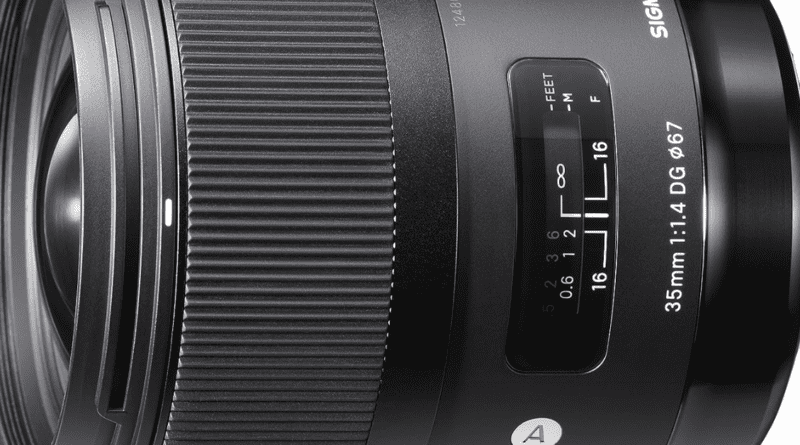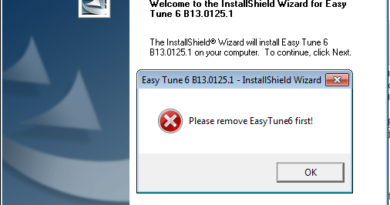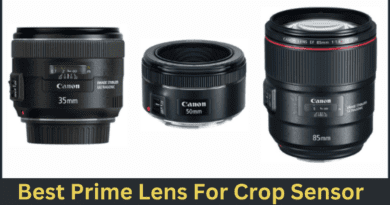Best Lens For Astrophotography Nikon d5600
Astrophotography is a fascinating and rewarding pursuit, allowing you to capture the wonders of the night sky with your Nikon D5600. However, to truly excel in this field, you’ll need the right equipment, and one of the most critical components is your lens. Let’s explore the best lens for astrophotography Nikon D5600, helping you make an informed choice to take your stargazing images to the next level.
Why the Nikon D5600?
Before diving into lens choices, it’s essential to understand why the Nikon D5600 is an excellent choice for astrophotography. This DSLR camera is known for its exceptional image quality, user-friendly interface, and affordability, making it an attractive option for both beginners and experienced photographers. With the right lens, the Nikon D5600 can capture breathtaking shots of the night sky, stars, and celestial phenomena.
Key Considerations for Astrophotography Lenses
Aperture Size – The Wider, the Better
When it comes to astrophotography, aperture size plays a crucial role. The wider the aperture, the more light your lens can gather, allowing you to capture brighter and more detailed images of stars, galaxies, and nebulae. Look for lenses with an aperture of at least f/2.8 or wider for optimal results.
Focal Length – Zoom In or Widen Your View
The choice of focal length depends on the type of astrophotography you want to pursue. Here are two common options:
- Wide-angle lenses (e.g., 14mm to 24mm): These are great for capturing expansive views of the night sky, including the Milky Way and meteor showers. They also work well for landscape astrophotography, where you want to include foreground elements.
- Telephoto lenses (e.g., 200mm to 400mm): If you want to capture close-up shots of the moon, planets, or distant galaxies, a telephoto lens is the way to go. They allow you to zoom in on celestial objects with great detail.
Image Stabilization – Eliminating the Shake
Astrophotography often involves long exposure shots, which can be susceptible to camera shake. To counteract this, consider lenses with built-in image stabilization (IS) or vibration reduction (VR) technology. This feature ensures your images remain sharp, even during extended exposures.
Compatibility – Nikon Mount
Ensure that the lens you choose has a Nikon F-mount, as the Nikon D5600 uses this type of mount. Compatibility is crucial to ensure proper attachment and functionality.
Best Lens Options for Astrophotography with Nikon D5600
Now that you understand the key factors to consider, let’s explore some of the best lens options for astrophotography with your Nikon D5600.
1. Nikon AF-S NIKKOR 14-24mm f/2.8G ED
The Nikon AF-S NIKKOR 14-24mm f/2.8G ED is a legendary wide-angle lens known for its outstanding image quality. With a fast f/2.8 aperture, it excels in capturing the night sky’s beauty. Its ultra-wide focal length makes it ideal for capturing the Milky Way or the dazzling trails of shooting stars.
This lens features Nikon’s Silent Wave Motor (SWM) for quick and quiet autofocusing, a significant advantage when you want to focus on the stars without disturbing the tranquility of the night.
2. Sigma 35mm f/1.4 DG HSM Art
The Sigma 35mm f/1.4 DG HSM Art lens is a versatile prime lens with a wide f/1.4 aperture, making it excellent for astrophotography. While not as wide as a dedicated wide-angle lens, it offers fantastic low-light performance and sharpness across the frame.
This lens is perfect for capturing constellations or creating stunning compositions with a wide field of view. Its fast aperture also allows for creative light-painting techniques, adding an artistic touch to your astro images.
3. Tamron SP 70-200mm f/2.8 Di VC USD G2
For those interested in capturing celestial objects in greater detail, the Tamron SP 70-200mm f/2.8 Di VC USD G2 is an excellent choice. With a focal length range of 70-200mm and a constant f/2.8 aperture, it provides the flexibility to zoom in on the moon, planets, or distant galaxies.
This lens features Tamron’s Vibration Compensation (VC) technology, ensuring sharp images even at longer focal lengths. It’s a versatile option that can be used for both astrophotography and daytime photography.
Anecdote: Unveiling the Secrets of the Night Sky
Imagine yourself on a clear, moonless night in a remote location far from city lights. You set up your Nikon D5600 with the perfect lens, ready to capture the mysteries of the universe. As you peer through the viewfinder, you realize that you are about to reveal the secrets of the night sky in a way you never thought possible.
How to Choose the Right Lens
Choosing the right lens for astrophotography is a highly individual decision, as it depends on your specific interests and budget. Here’s a step-by-step guide to help you make the best choice:
1. Determine Your Astrophotography Goals
Consider what type of astrophotography you want to pursue. Are you more interested in wide-field shots of the Milky Way, or do you want to zoom in on distant galaxies? Your goals will influence your choice of focal length.
2. Set Your Budget
Astrophotography can be an expensive hobby, but there are lenses available for various budgets. Decide how much you’re willing to invest in your lens, keeping in mind that quality often comes with a higher price tag.
3. Research and Compare Lenses
Read reviews, watch YouTube tutorials, and seek advice from experienced astrophotography’s. Look for lenses that match your goals and budget. Pay attention to factors like aperture size, image stabilization, and compatibility with your Nikon D5600.
4. Try Before You Buy
If possible, visit a camera store and try out different lenses on your camera body. Get a feel for their weight, size, and how they handle in low-light conditions. This hands-on experience can help you make a more informed decision.
5. Consider Future Upgrades
Think about your long-term goals in astrophotography. Investing in a high-quality lens now may save you money in the long run, as you won’t need to upgrade as soon as your skills improve.
6. Make the Purchase
Once you’ve narrowed down your choices, make your purchase from a reputable retailer or online store. Ensure that you are getting a genuine product and consider purchasing from stores with a good return policy.
Anecdote: Chasing the Persoid Meteor Shower
Last summer, I embarked on a journey to capture the Persoid meteor shower. Armed with my Nikon D5600 and a wide-angle lens, I ventured to a remote dark-sky location. The anticipation was palpable as I set up my gear, following the guidance of fellow astrophotography’s.
As the night unfolded, I witnessed a breathtaking spectacle. Shooting stars streaked across the sky, and my camera captured their fleeting beauty with every long exposure. The lens I had carefully chosen delivered stunning results, and I knew I had made the right investment.
Boosting Your Confidence
Investing in the right lens for your astrophotography endeavors is a significant step towards capturing stunning celestial moments. With the Nikon D5600 and the right lens in hand, you’ll have the tools you need to create mesmerizing images of the night sky.
Remember, the journey of astrophotography is not just about equipment; it’s also about patience, dedication, and a deep appreciation for the cosmos. So, go out there, experiment, learn, and let your passion for the stars shine through your photographs.
Can I use a Nikon D5600 for astrophotography?
- Image Quality: The Nikon D5600 features a 24.2-megapixel APS-C sensor, which provides excellent image quality and detail. This sensor size is well-suited for astrophotography, especially when coupled with the right lens.
- Low-Light Performance: The camera’s ability to perform well in low-light conditions is crucial for astrophotography, where you’ll often be shooting in dark environments. The D5600 has good low-light performance, allowing you to capture stars, planets, and celestial objects effectively.
- Interchangeable Lenses: The D5600 uses the Nikon F-mount system, which offers a wide range of compatible lenses. This flexibility allows you to choose the best lens for your specific astrophotography needs, whether it’s a wide-angle lens for capturing the Milky Way or a telephoto lens for detailed shots of the moon and planets.
- Live View Mode: The D5600 has a Live View mode, which is beneficial for focusing on stars and celestial objects accurately. You can zoom in on a bright star in Live View and manually adjust focus for sharp images.
- Long Exposure Capability: The D5600 allows you to take long-exposure shots, a common technique in astrophotography to capture star trails, deep-sky objects, and more. It has a maximum exposure time of 30 seconds in its manual mode, which can be extended using external intervalometers or remote controls.
- ISO Control: The camera offers a wide ISO range, which is essential for astrophotography. You can increase the ISO to capture faint stars and galaxies or reduce it to minimize noise in your images.
- Tilt-Swivel Screen: The D5600 comes with a tilting LCD screen, which can be handy for framing your shots, especially when you need to shoot at awkward angles or low to the ground.
While the Nikon D5600 is a capable camera for astrophotography, keep in mind that achieving stunning astrophotography results also depends on your choice of lens, tripod stability, and post-processing techniques. Additionally, understanding the fundamentals of astrophotography, such as star tracking and image stacking, can help you take your astrophotography to the next level.
Which Nikon lens is best for astrophotography?
- Nikon AF-S NIKKOR 14-24mm f/2.8G ED:
- Type: Wide-Angle Zoom
- Aperture: f/2.8
- This legendary lens is excellent for capturing expansive views of the night sky, including the Milky Way and meteor showers. Its ultra-wide focal length allows you to include both the night sky and foreground elements in your shots.
- Sigma 35mm f/1.4 DG HSM Art:
- Type: Wide-Angle Prime
- Aperture: f/1.4
- While not as wide as some other options, the Sigma 35mm f/1.4 excels in low-light conditions and is great for capturing constellations and creating artistic compositions of the night sky.
- Nikon AF-S NIKKOR 50mm f/1.8G:
- Type: Standard Prime
- Aperture: f/1.8
- This lens is a budget-friendly option for astrophotography. While it’s not as wide as some others, its wide aperture makes it suitable for capturing starry skies and detailed constellations.
- Tokina AT-X 11-16mm f/2.8 Pro DX II:
- Type: Wide-Angle Zoom
- Aperture: f/2.8
- Known for its sharpness and wide aperture, this lens is a popular choice for capturing the Milky Way and other wide-field astrophotography subjects.
- Rokinon 14mm f/2.8 IF ED UMC (Manual Focus):
- Type: Wide-Angle Prime
- Aperture: f/2.8
- This manual focus lens is highly regarded for astrophotography due to its sharpness and affordability. It’s specifically designed for low-light shooting.
- Nikon AF-S NIKKOR 200-500mm f/5.6E ED VR:
- Type: Telephoto Zoom
- Aperture: f/5.6
- If you’re interested in capturing distant celestial objects like galaxies and nebulae, a telephoto lens like this one can be an excellent choice. Its focal length allows you to zoom in on the night sky.
Conclusion
In conclusion, selecting the best lens for astrophotography Nikon D5600 requires careful consideration of factors like aperture size, focal length, image stabilization, and budget. The Nikon AF-S NIKKOR 14-24mm f/2.8G ED, Sigma 35mm f/1.4 DG HSM Art, and Tamron SP 70-200mm f/2.8 Di VC USD G2 are excellent options, each catering to different aspects of astrophotography.
Remember that your choice of lens should align with your specific astrophotography goals and budget. Take the time to research, test, and invest wisely. With the right lens, your Nikon D5600 will become a powerful tool for capturing the wonders of the night sky, allowing you to share the beauty of the cosmos with the world.
1. What’s the best lens for Nikon D5600?
The best lens for Nikon D5600 depends on your specific photography needs, but some popular choices include the Nikon AF-S NIKKOR 14-24mm f/2.8G ED for wide-angle and astrophotography, and the Nikon AF-S NIKKOR 50mm f/1.8G for general purposes.
2. Is the Nikon D5600 good for night photography?
Yes, the Nikon D5600 is suitable for night photography, including astrophotography. Its low-light performance and adjustable settings make it a good choice for capturing images in low-light conditions.
3. What is better than D5600?
“Better” depends on your specific requirements, but some Nikon models that offer advanced features compared to the D5600 include the Nikon D7500, D500, and full-frame models like the Nikon Z series mirrorless cameras.
4. Does the Nikon D5600 have night vision?
No, the Nikon D5600 does not have night vision. It relies on available light or external lighting sources for night photography.
5. Is Nikon D5600 a semi professional camera?
The Nikon D5600 is considered an entry-level DSLR camera with features that can meet the needs of both beginners and enthusiasts. It may not be categorized as a “semi-professional” camera, but it offers good performance for its class.
6. What is the highest resolution Nikon D5600?
The Nikon D5600 has a maximum image resolution of 24.2 megapixels.
7. Is D3500 better than D5600?
The Nikon D3500 is a more basic and affordable DSLR compared to the D5600. The D5600 offers more advanced features and a tilting touchscreen, making it a better choice for those looking for more versatility and control.
8. Is Nikon D5600 a 4k camera?
No, the Nikon D5600 is not a 4K camera. It records videos in Full HD (1080p) resolution at 60fps.
9. Is the Nikon D5600 build quality?
The Nikon D5600 has a good build quality for its class, with a durable plastic body and comfortable ergonomics. While it may not be as rugged as some higher-end models, it is well-constructed for its intended use.
10. Do professional photographers use Nikon D5600?
Professional photographers typically use higher-end Nikon DSLRs or mirrorless cameras for their work. While the D5600 is a capable camera, it is often chosen by enthusiasts and hobbyists due to its balance of features and affordability. Professionals may opt for models with more advanced capabilities and ruggedness for their demanding work.




